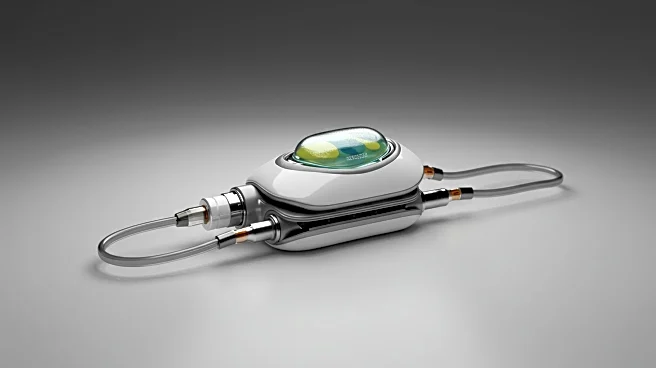What's Happening?
Researchers at Cornell University have developed a new implant that could revolutionize the treatment of type 1 diabetes (T1D) by sustaining insulin-producing cells without the need for immunosuppressive drugs. The implant, known as the BioElectronics-Assisted Macroencapsulation (BEAM) system, combines a miniaturized electrochemical oxygen generator with a scalable cell pouch. This system provides continuous oxygen supply to the encapsulated cells, allowing them to survive and function effectively. In vitro tests showed that the BEAM system kept rat insulinoma cell aggregates and human pancreatic islets alive under severe hypoxia conditions. In rat models, the system reversed diabetes for up to three months without immunosuppression, highlighting the importance of continuous oxygen supply for the long-term function of pancreatic islets.
Why It's Important?
The development of the BEAM system represents a significant advancement in the treatment of type 1 diabetes, potentially eliminating the need for lifelong immunosuppressive drugs. This could improve the quality of life for the two million Americans living with T1D by reducing the risk of severe hypoglycemia and chronic hyperglycemia-related complications. The ability to sustain high-density cell capsules with continuous oxygenation could make cell therapy a routine care option, moving it from experimental to mainstream treatment. This innovation could pave the way for broader applications in treating other conditions where the body lacks essential cells or functions.
What's Next?
The research team plans to scale up their studies to include pig models and eventually human trials. If successful, this could lead to the widespread adoption of the BEAM system for treating type 1 diabetes and potentially other diseases. The researchers envision a future where implants with allogeneic cells are used long-term to replace missing functions in the body, offering a new paradigm in regenerative medicine.
Beyond the Headlines
The BEAM system's ability to provide continuous oxygenation to encapsulated cells could have broader implications for cell therapy and regenerative medicine. It addresses a critical challenge in cell encapsulation systems—oxygen supply—potentially leading to more effective treatments for various conditions. This innovation could also stimulate further research into electrochemical oxygen generation and its applications in medical devices.















